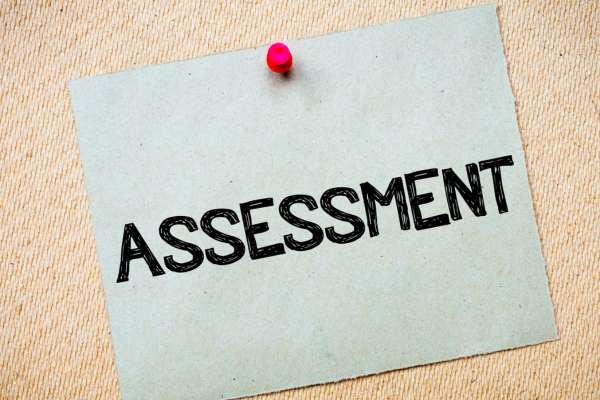Disposing of a floor lamp might seem straightforward, but there are several factors to consider to ensure you’re doing it responsibly and sustainably. Whether your lamp has reached the end of its life or you’re simply looking to upgrade, proper disposal is crucial to minimize environmental impact. This guide will walk you through the process of assessing your lamp’s condition, understanding local disposal regulations, and exploring various options like recycling, donating, and upcycling. By following these steps, you can make sure that your old floor lamp is dispose of in an eco-friendly manner, keeping hazardous materials out of landfills and promoting the reuse of valuable components. Let’s dive into the best practices for disposing of a floor lamp.
What parts of a floor lamp can be recycled?
A floor lamp has several recyclable parts. The metal base, pole, and hardware can be recycled as scrap metal. The glass or plastic lampshade is recyclable, depending on local guidelines. Electrical components like the cord and switch can be recycled at electronic waste facilities. Bulbs, especially CFLs and LEDs, should be taken to specific recycling centers due to hazardous materials. Always check local recycling regulations for specifics.
Assessment

Check if the Lamp is Still Functional
Begin by testing the floor lamp to see if it still works. Plug it in, switch it on, and check for any electrical issues or damage. If the lamp is functional, consider donating it or passing it on to someone who might need it. A working lamp can still be of use and avoids unnecessary waste.
Determine if Parts Can Be Reused or Recycled
If the lamp is no longer functional, evaluate its components to see what can be reused or recycled. Metal parts, plastic elements, and glass components are often recyclable. Additionally, some parts might be repurposed for other projects or repairs. Identifying these components helps ensure they are disposed of responsibly, minimizing environmental impact.
Local Disposal Regulations

Research your local disposal regulations to understand the proper way to dispose of a floor lamp made in your area. Different regions have varying rules for electronic waste and large items. Contact your local waste management authority or visit their website to get specific instructions. Adhering to these regulations ensures you are compliant with local laws and helps in the efficient and environmentally friendly disposal of your lamp.
Reuse and Donation

If your floor lamp is still in good working condition, consider reusing or donating it. Many thrift stores, charities, and community centers accept functional lamps. Donating helps reduce waste and supports those in need. Additionally, offering the lamp to friends, family, or neighbors can extend its life and keep it out of landfills. Reuse and donation are excellent ways to promote sustainability and give your lamp a second life.
Recycling

For non-functional lamps or those beyond repair, recycling is a responsible option. Identify the recyclable components such as metal, plastic, and glass. Locate nearby recycling centers that accept electronic waste or specific materials from floor lamps. Some centers may even offer pickup services. Proper recycling prevents hazardous materials from polluting the environment and allows valuable resources to be reused in manufacturing new products.
Special Handling of Electrical Components

Electrical components in floor lamps, such as wiring and sockets, require careful handling. Unplug the lamp before starting any disassembly. Remove and separate electrical parts, ensuring they are not damaged further. Check with local electronic waste facilities for proper disposal methods, as these components should not be thrown in regular trash. Proper disposal of electrical parts prevents potential hazards and supports safe recycling practices.
Disassembly

Disassembling the floor lamp is an essential step before disposal. Start by unplugging the lamp and removing any bulbs. Use appropriate tools to carefully dismantle the lamp into its base components: metal frame, plastic parts, glass, and electrical elements. Follow safety precautions, such as wearing gloves and eye protection. Proper disassembly facilitates recycling and ensures that each part is disposed of in the most environmentally friendly manner.
Hazardous Materials

Identify any hazardous materials within the lamp, such as mercury found in some fluorescent bulbs. These materials require special disposal to prevent environmental contamination. Place hazardous components in sealed containers and take them to a designated hazardous waste facility. Avoid breaking bulbs or exposing hazardous substances. Proper handling and disposal of hazardous materials protect both human health and the environment.
Selling for Parts

If your floor lamp has components that are still in good condition, consider selling them for parts. Platforms like eBay, Craigslist, and local classifieds are great places to list these items. Components such as lamp shades, bases, and wiring can often find buyers looking for spare parts or DIY projects. Selling for parts not only helps you recoup some value but also promotes the reuse of materials, reducing waste.
Upcycling Ideas

Get creative with upcycling ideas for your old floor lamp. You can transform parts of the lamp into unique home decor items, such as candle holders, plant stands, or new lighting fixtures. Upcycling not only gives new life to your lamp but also adds a personalized touch to your home. There are numerous DIY projects online that can guide you in turning your floor lamp into something entirely new and useful.
Professional Disposal Services

For large or complex floor lamps, or if you prefer not to handle disposal yourself, consider hiring professional disposal services. These services specialize in the safe and environmentally friendly disposal of electronic waste and large items. They can efficiently disassemble, recycle, and dispose of your floor lamp, saving you time and effort. Research local companies and compare costs and services to find the best option for your needs.
Conclusion
Disposing of a floor lamp responsibly involves several steps, from assessing its condition to exploring disposal options such as recycling, donation, and upcycling. By following local regulations and considering creative reuse possibilities, you can ensure your old floor lamp is dispose of in an eco-friendly manner. Whether you handle the disposal yourself or hire professionals, taking these steps helps minimize environmental impact and promotes sustainability. Proper disposal practices benefit not only your community but also the planet as a whole.
